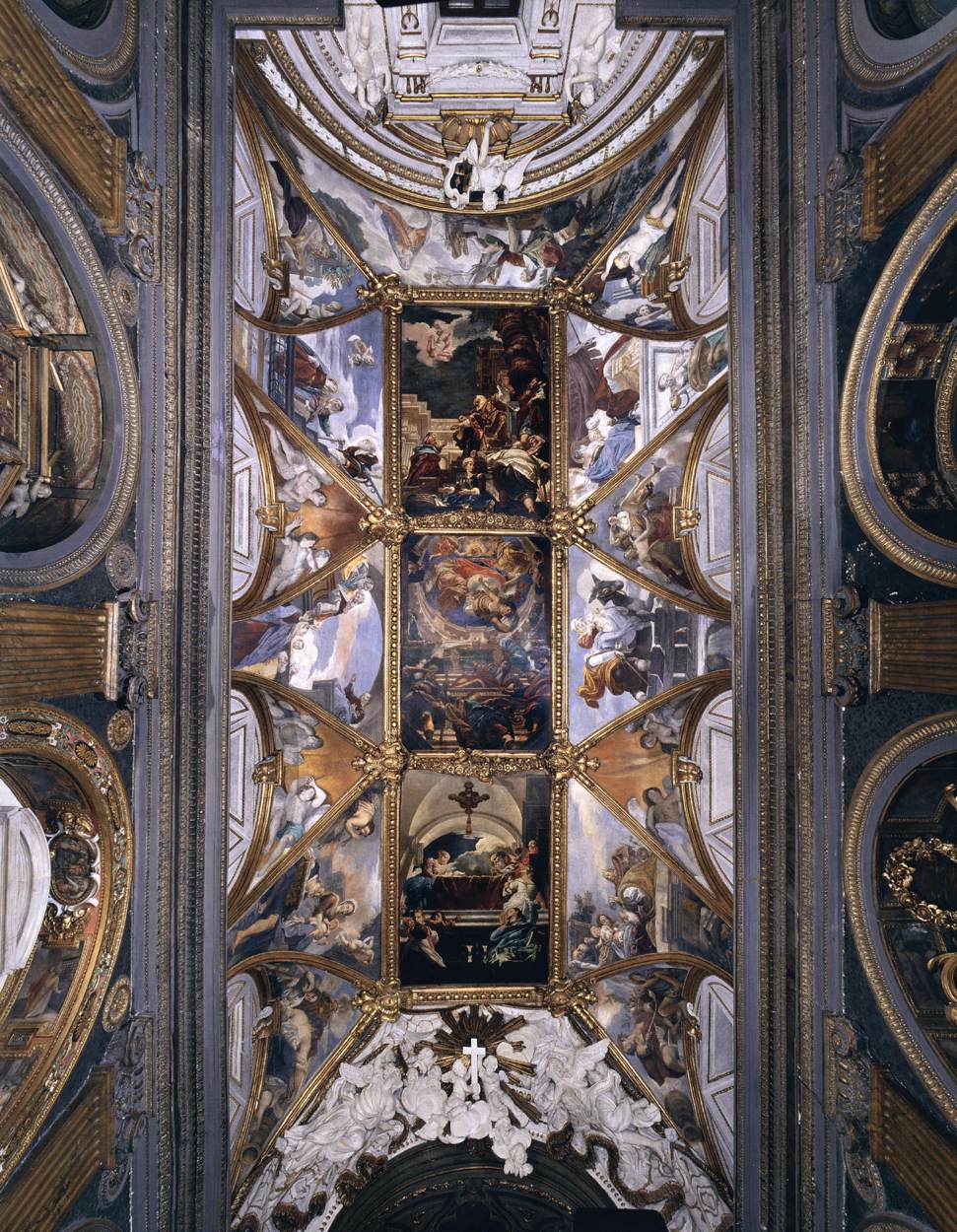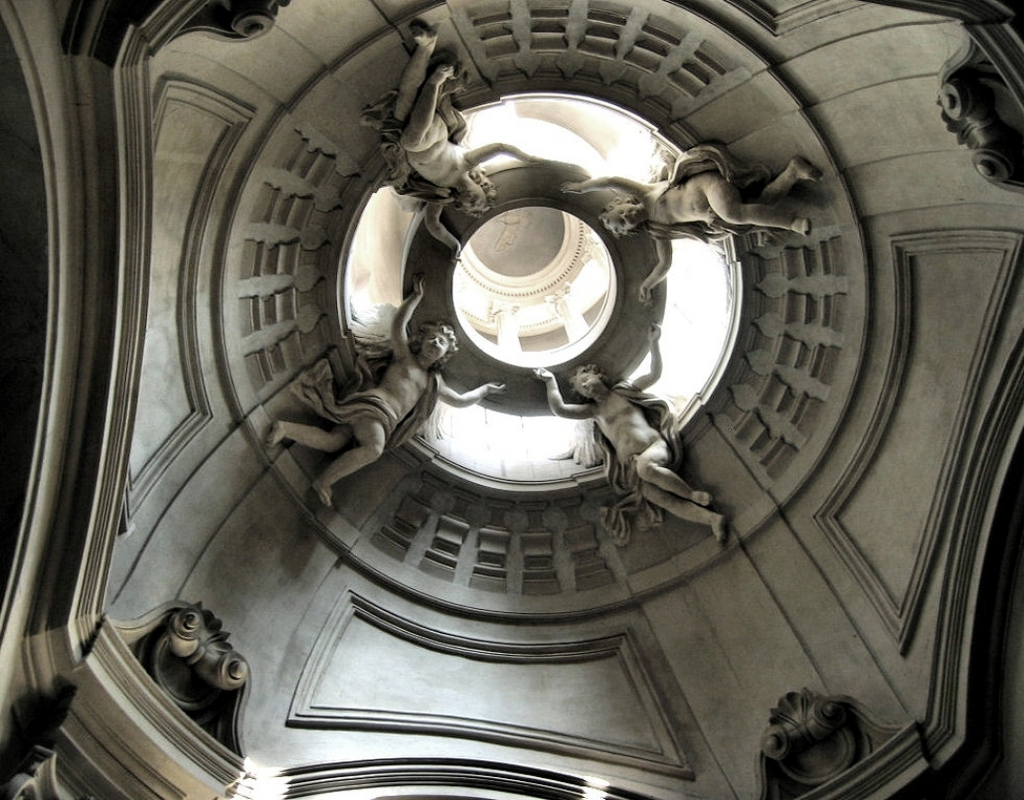Baroque artist Antonio Gherardi died 10 May 1702. Born in 1638 in Rieti, near Rome, Antonio’s original surname was Tatoti, but he changed it when he moved to Rome around 1657. Thanks to his patron Monsignore Bulgarini, Gherardi studied under Pier Francesco Mola and Pietro da Cortona. The influence of Pietro on Antonio was so decisive that many of his first paintings were attributed to the old master.
Between 1667 and 1669 Gherardi travelled extensively in northern Italy. Once back in Rome, he displayed his newly-acquired pictorial influences in the vault of Santa Maria in Trivio, one his most notable works. Rome was the major center of Gherardi’s activity. Here, in 1674, he joined the prestigious Academy of Saint Luke.
In the Avila Chapel in the Basilica of Santa Maria in Trastevere Gherardi combined painting, architecture and sculpture (mainly through the use of stucco decorations). This vibrant theatrical sensitivity can also be admired in the Santa Cecilia Chapel in the Church of San Carlo ai Catinari, designed by Gherardi shortly before his death in 1702. This chapel is regarded as a point of confluence of the great Italian Baroque art of the 17th century.
Reference: Ivana Corsetti, “GHERARDI, Antonio,” Dizionario Biografico degli Italiani, vol. 53 (2000).
Nave vault, 1669-70, oil on canvas and fresco, Santa Maria in Trivio, Rome.
Avila Chapel, c. 1686, Basilica di Santa Maria in Trastevere, Rome.


